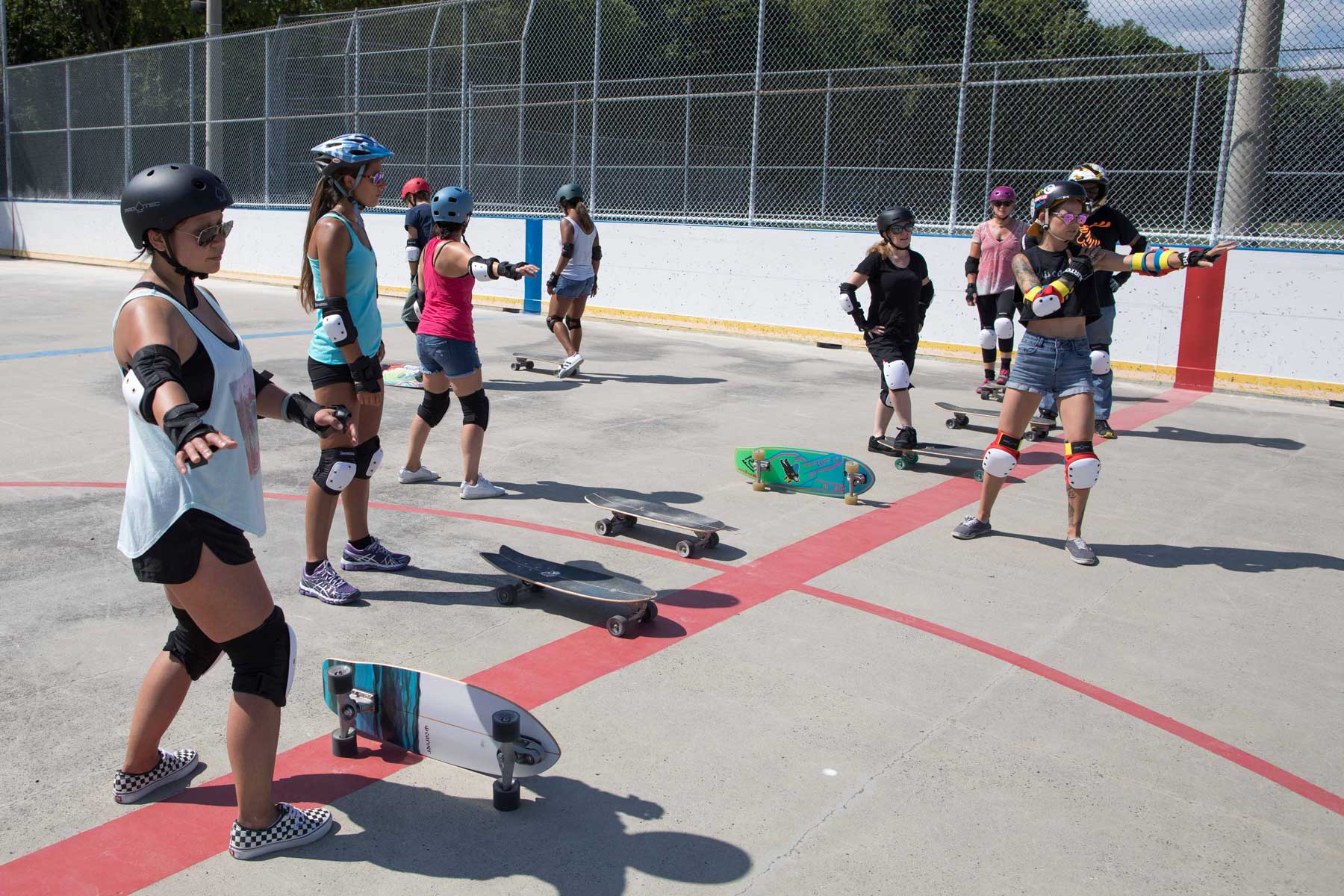With surf season approaching on the Great Lakes, you’re probably thinking it’s about time to pull out your surfboard, grab some wax from the shop, and start checking and checking and checking the surf reports daily until you see those charts start to rise. But what if there was a way to start training for the waves, even when there aren’t any waves in sight? No, I’m not talking about hitting the gym and building up your biceps and quads for a better pop up. I’m talking about shredding the streets on a carver skateboard.

A carver skateboard was designed to replicate the movement of surfing on the land — and that’s exactly what it does. This means that you can simulate the motion and feeling of riding and carving a wave without actually needing any waves. All you need is your carver board, the power of your feet, and a bit of open roadway, and you can cruise along just like you would on a surfboard. Better yet, find yourself an outdoor hockey rink (the surf shop uses Jimmie Simpson Park) and cruise around safely until your legs can’t handle it anymore. Your surfing season will thank you because this, of course, is an incredible way to improve your surfing when there is no surf. Why, you ask? Because you end up using the exact same muscles to balance yourself and maneuver on a carver as you would when you’re shredding a wave. And, since the movement between surfing and carver skating is so similar, you’ll be able to practice some key surf maneuvers, such as cutbacks, bottom turns, snaps, and nose riding. This means that the next time you hop on a surfboard in (hopefully) a few weeks, the feel of shredding a wave (essentially like a pro) will be second nature to you.

Another great thing about using a carver is that, unlike surfing, you don’t need to rely on the lakes or oceans to produce waves to cruise. In fact, you don’t even need a skatepark to reap the full benefits of a carver board. You can literally hop on your board, skate around the city, and practice your surf movements any day of the week, even if it’s raining — but I wouldn’t recommend that, as waterlogged boards are never fun no matter how much the rain makes you feel like you’re surfing! Once you do progress, however, feel free to bring your carver to the local skate park, a bowl, aqua-ducts, or any other unusual places you can think of. These spots will only help further improve your skills come surf season.

Lastly, the other sweet thing about riding a carver is that you can improve not only your surfing skills, but also your skating, wakeboarding and even snowboarding skills year-round. The movements and skill-set required to rip around on a carver translates perfectly to pretty much every board sport. So, no matter what board you choose to put beneath your feet when there aren’t any waves, a carver will help you shred at your maximum capability. You’ll also look cool, too, as these carver boards are becoming the preeminent way of cross training between surf sessions. They’re fairly inexpensive too, and, since you most likely won’t be hitting any rails or attempting kickflips like you would on a regular skateboard, your investment will also last you a long time.

And, in case you were worried about injuring yourself before the surf season starts, riding a carver skateboard is a fairly low impact endeavour. Just make sure you wear the proper safety equipment (i.e. a helmet, and wrist, knee and elbow pads). The waves on the lakes may be semi-forgiving, but the concrete streets in the Greater Toronto Area are not.

So, if you’re looking to keep the surfing feel and vibes up during the off season, or you’re looking for a family-friendly way to explore the city, hop on a carver and go for a ride. You’ll cruise as freely as you would on a surfboard, except you won’t be waiting in a line up all day hoping for the perfect wave to break just so you can feel the board move beneath your feet. If you’ve never tried riding one before, check out our upcoming carver sessions to learn the ins and outs of what makes them the ultimate cross training vehicle for surfing, and (most importantly!) why they’ll help you make the most of your days off from the water.
Words by Trent Ogilvie. Photographs by Lucas Murnaghan.

Trent Ogilvie is a published writer, award-winning photographer, business development professional, entrepreneur and adventurer. He graduated from the University of Toronto with a specialization in English Literature and a minor in Professional Writing. Aside from his extensive explorations in Canada, Trent has also surfed throughout Central America, traversed through the turquoise seas and islands of the Caribbean, and explored the tropical jungles of South East Asia. He’s also seen a crocodile or two along the way. Find him on Instagram.






